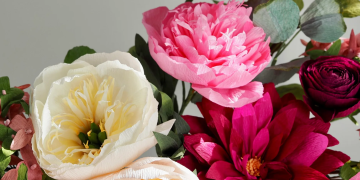The colors you choose for your home can have a profound impact on how you feel, how you interact with others, and even how productive you are. Color is more than just a visual element—it evokes emotions, sets moods, and can influence your overall well-being. Understanding the psychology of color in interior design allows you to create spaces that not only look beautiful but also serve a purpose. Whether you want to create a calming bedroom, an energetic kitchen, or an inviting living room, the colors you use play a crucial role in shaping the atmosphere. Here, we explore the psychological effects of different colors and how to use them effectively in your home.
Understanding the Basics of Color Psychology
Color psychology is the study of how colors affect human behavior and emotions. Different colors have different meanings and evoke different responses, which is why choosing the right colors for your interior design is so important. While personal preferences and cultural backgrounds can influence how we perceive colors, there are some general principles that apply to color psychology in interior design.
Warm colors—such as red, orange, and yellow—tend to evoke feelings of warmth, energy, and excitement. These colors are often used to create a sense of coziness or to stimulate conversation and activity. On the other hand, cool colors—such as blue, green, and purple—tend to evoke feelings of calm, relaxation, and tranquility. These colors are ideal for spaces where you want to unwind and feel at ease.
Neutral colors—such as white, gray, and beige—act as a backdrop and help create a sense of balance and stability. Neutrals are often used in minimalist and modern designs, allowing other colors and elements to shine without overwhelming the space.
Red: Energy and Passion
Red is a powerful and dynamic color that evokes strong emotions. It is often associated with energy, passion, and excitement. In interior design, red can be used to create a bold statement and draw attention to a particular area. It is a stimulating color that can increase heart rate and evoke a sense of urgency, making it ideal for spaces where you want to encourage conversation and activity, such as dining rooms or living rooms.
However, red can also be overwhelming if used excessively. To avoid creating a space that feels too intense, consider using red as an accent color rather than painting an entire room red. A red feature wall, red throw pillows, or red artwork can add just the right amount of energy without overpowering the space.
Orange: Warmth and Sociability
Orange is a warm and welcoming color that evokes feelings of warmth, comfort, and sociability. It is often used to create a friendly and inviting atmosphere, making it a great choice for living rooms, kitchens, and dining areas. Orange is also known to stimulate appetite and conversation, which is why it is commonly used in social spaces.
If bright orange feels too bold for your taste, consider using softer shades like peach or terracotta. These tones offer the warmth of orange without being too overpowering, creating a cozy and inviting atmosphere that is perfect for family gatherings and entertaining guests.
Yellow: Happiness and Optimism
Yellow is a bright and cheerful color that is often associated with happiness, optimism, and creativity. It is a great choice for spaces where you want to feel energized and inspired, such as kitchens, home offices, or playrooms. Yellow can make a room feel sunny and uplifting, especially when used in spaces that receive a lot of natural light.
However, too much yellow can be overstimulating and may create feelings of anxiety. To keep the atmosphere balanced, use yellow as an accent color or pair it with neutral tones to soften its effect. Light shades of yellow can work well in bedrooms or bathrooms, creating a sense of warmth and comfort without overwhelming the senses.
Blue: Calm and Relaxation
Blue is one of the most popular colors in interior design due to its calming and soothing qualities. It is often associated with feelings of peace, tranquility, and relaxation, making it an ideal choice for bedrooms, bathrooms, and other spaces where you want to unwind. Lighter shades of blue can create a serene and airy atmosphere, while darker shades can add depth and a sense of coziness.
Blue is also known to promote focus and concentration, which makes it a great choice for home offices or study areas. However, too much blue can sometimes feel cold or uninviting, so it’s important to balance it with warm accents, such as wood furniture or warm-toned textiles, to create a well-rounded and comfortable space.
Green: Balance and Harmony
Green is the color of nature and is often associated with balance, harmony, and renewal. It is a versatile color that works well in almost any room, from living areas to bedrooms and even kitchens. Green has a calming effect similar to blue, but it also brings a sense of freshness and vitality that makes it feel more energizing.
Using green in your home can help create a sense of connection to nature, especially when paired with natural materials like wood and stone. Soft shades of green, such as sage or mint, are perfect for creating a calming and restorative atmosphere, while deeper shades like emerald or forest green can add richness and depth to a space. Incorporating indoor plants is another great way to bring green into your home, adding both color and a natural element that promotes well-being.
Purple: Luxury and Creativity
Purple is often associated with luxury, creativity, and spirituality. It is a color that evokes a sense of sophistication and elegance, making it a popular choice for bedrooms and living rooms. Lighter shades of purple, such as lavender or lilac, can create a calming and romantic atmosphere, while deeper shades like plum or eggplant can add drama and a touch of opulence.
Purple is also known to stimulate creativity, making it a good choice for spaces where you want to feel inspired, such as a home office or studio. However, because purple can be quite bold, it is often best used in moderation, either as an accent color or in combination with neutral tones to create a balanced and harmonious look.
Neutral Colors: Calm and Versatility
Neutral colors—such as white, gray, beige, and taupe—are the foundation of many interior design schemes. These colors create a sense of calm, balance, and stability, making them ideal for any room in the home. Neutrals can serve as a backdrop that allows other colors and design elements to stand out, or they can be used on their own to create a minimalist and serene space.
White is often associated with cleanliness and simplicity, making it a popular choice for kitchens and bathrooms. Gray is versatile and sophisticated, working well in both modern and traditional spaces. Beige and taupe add warmth and can create a cozy and inviting atmosphere without being overwhelming. The key to using neutrals effectively is to incorporate different shades, textures, and materials to add depth and prevent the space from feeling flat or monotonous.
Creating the Right Mood with Color Combinations
While each color has its own psychological effects, the way colors are combined can also have a significant impact on the overall mood of a space. Understanding how to create harmonious color combinations is essential for achieving the desired atmosphere in your home.
Monochromatic color schemes—which use different shades of the same color—can create a cohesive and calming look. For example, using various shades of blue in a bedroom can create a serene and relaxing environment. Complementary color schemes—which use colors that are opposite each other on the color wheel, such as blue and orange—can create a dynamic and energetic atmosphere. Analogous color schemes—which use colors that are next to each other on the color wheel, such as green and yellow—can create a sense of harmony and balance.
When choosing a color scheme, consider the purpose of the room and the emotions you want to evoke. A living room, for example, might benefit from a warm and inviting color palette that encourages conversation and relaxation, while a home office might be better suited to a color scheme that promotes focus and creativity.
Using Color Accents to Enhance Your Space
If you are hesitant to commit to bold colors on your walls, consider using color accents to bring personality and vibrancy to your space. Accent colors can be introduced through furniture, textiles, artwork, and decorative accessories. A brightly colored sofa, a set of colorful throw pillows, or a bold area rug can add just the right amount of color to a neutral space without overwhelming it.
Accent walls are another great way to incorporate color without fully committing to a bold hue throughout the entire room. Painting one wall in a rich, vibrant color can create a focal point and add visual interest to the space. The key is to choose an accent color that complements the overall color scheme and enhances the mood you want to create.
Understanding the psychology of color in interior design allows you to create spaces that are not only beautiful but also functional and meaningful. By thoughtfully selecting colors that evoke the desired emotions and complement the purpose of each room, you can transform your home into a place that supports your well-being and enhances your quality of life.










